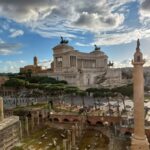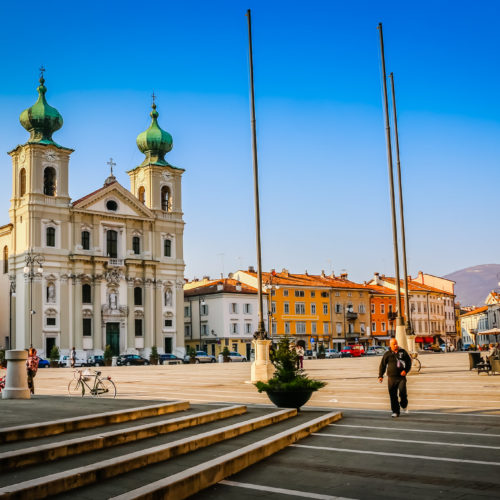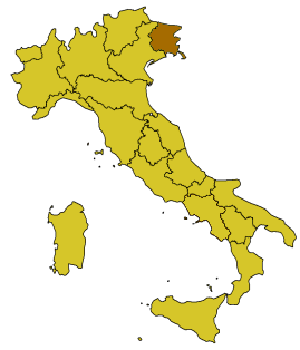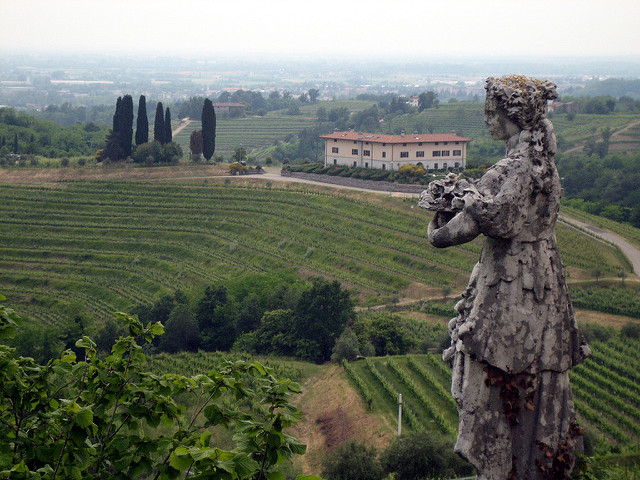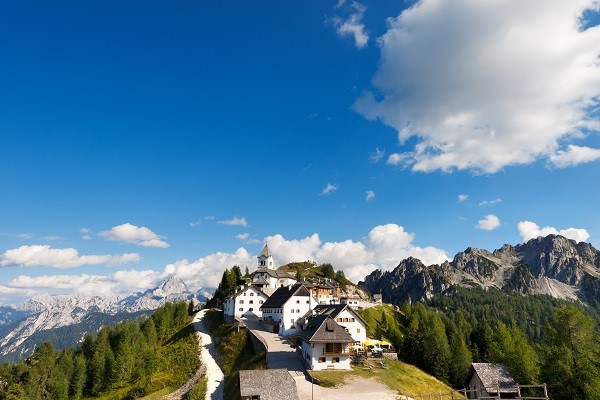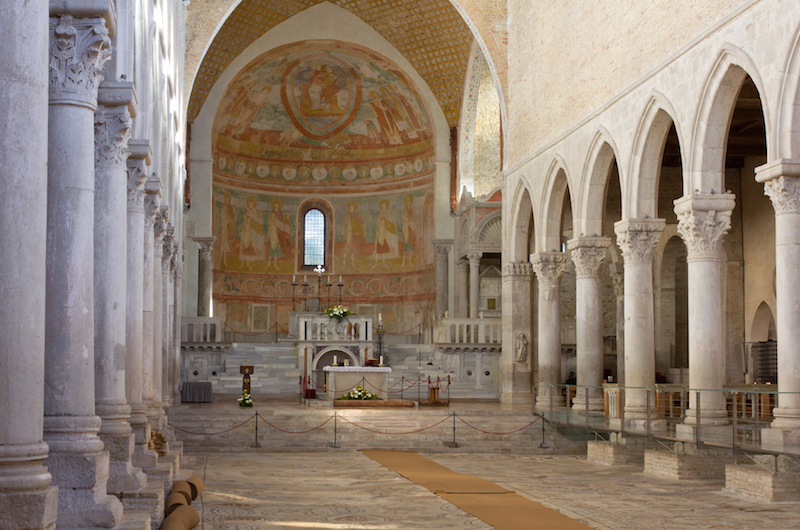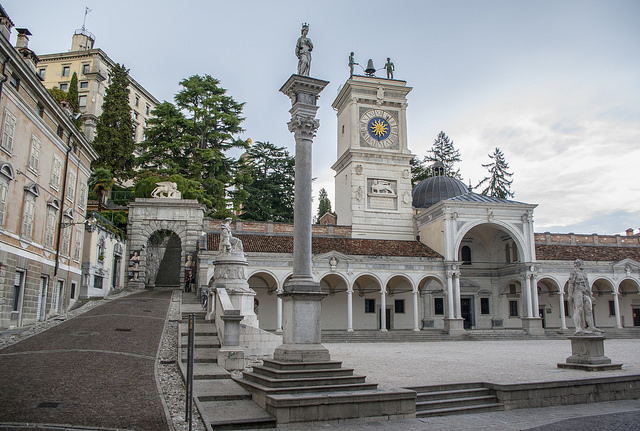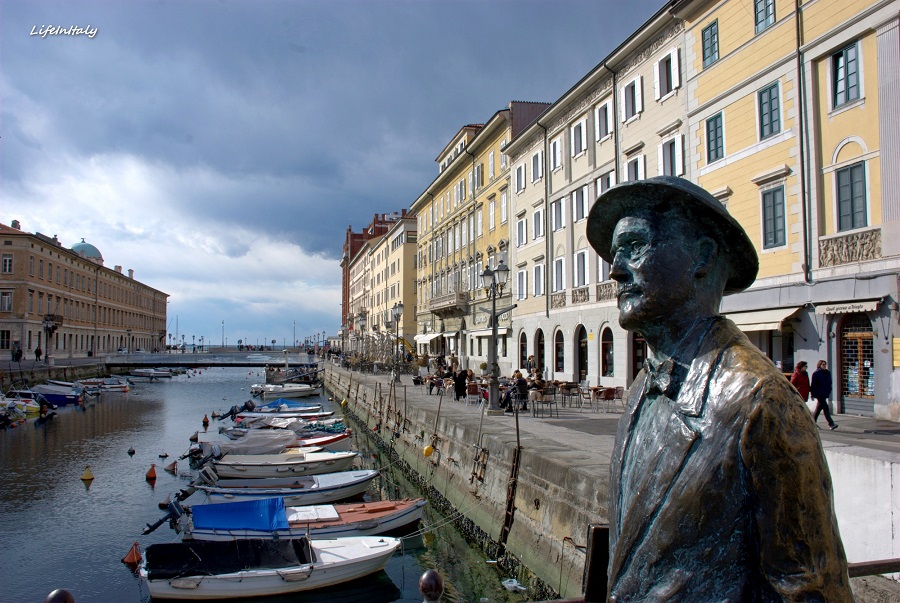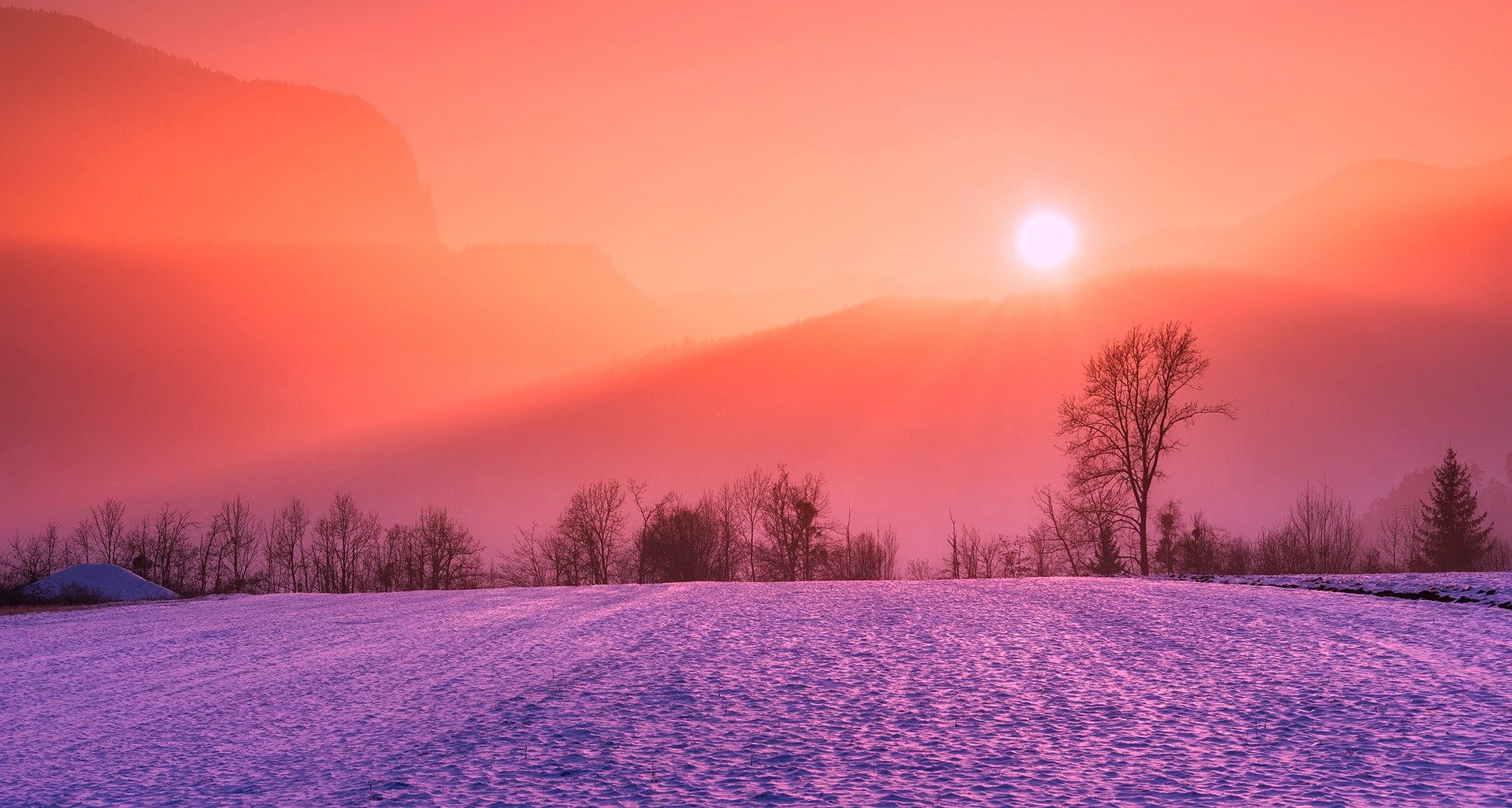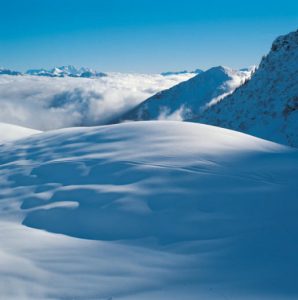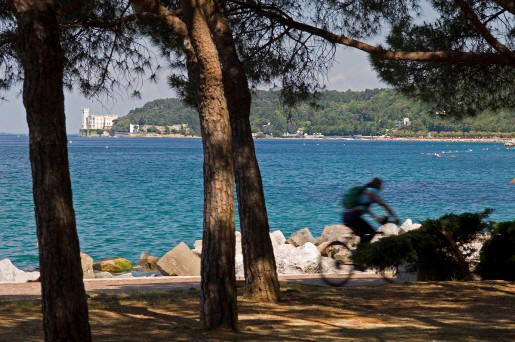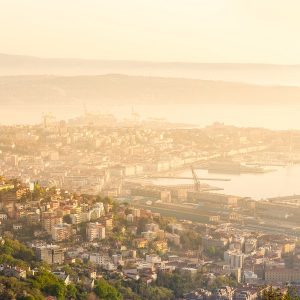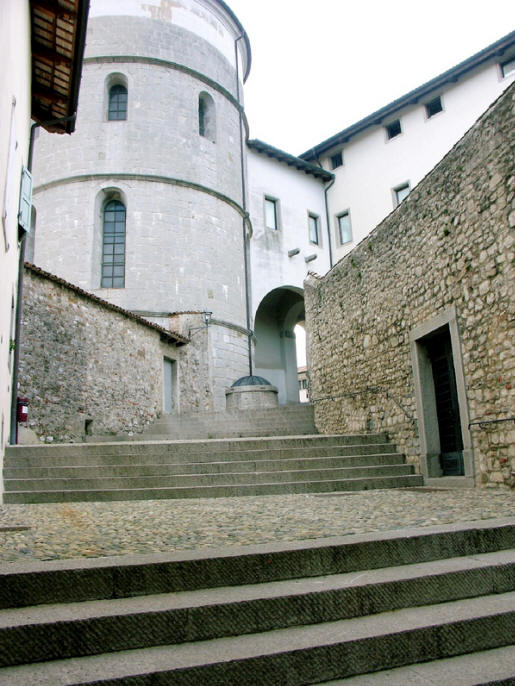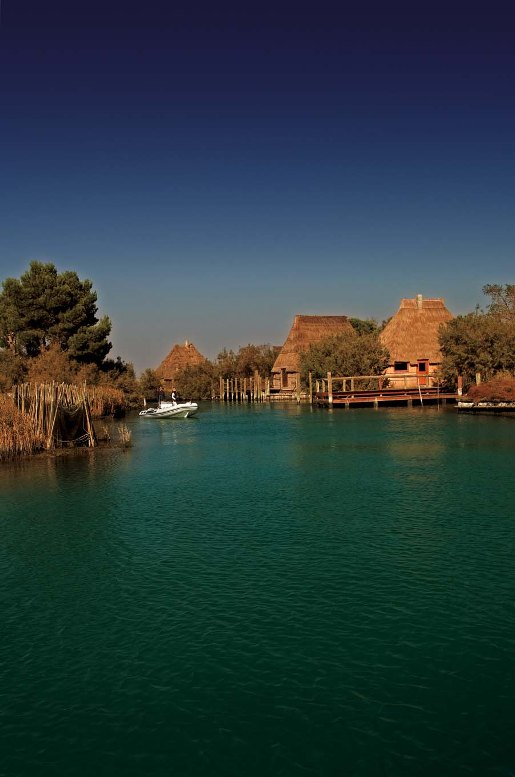A Vast Array of Things To Do in Friuli Part I
Enjoying a life of perfect relaxation amid golden beaches and the calm sea of Grado and Lignano. Diving amongst the white rocks of Trieste’s Riviera. With a thousand opportunities for open-air sports, restful spa breaks, and fun for the whole family. Are you ready to learn the best things to do in Friuli?
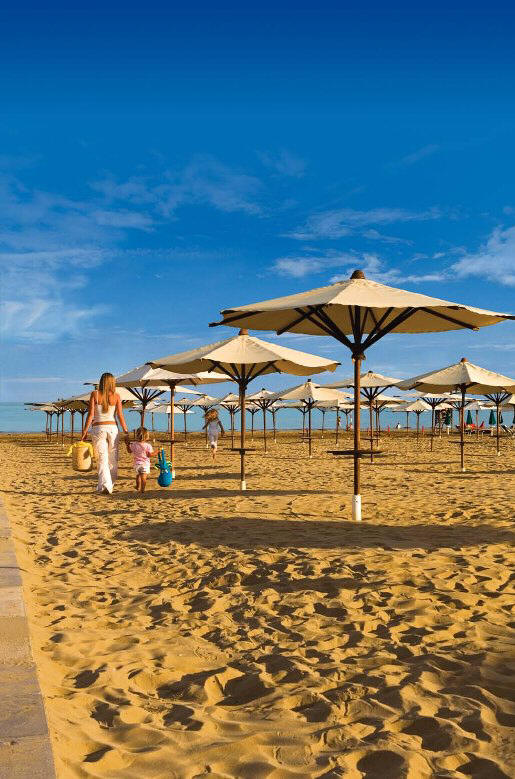
Discover the joy of stretching out on some of the most beautiful beaches of the north-east, where Italy ends and the Adriatic Sea penetrates the heartlands of the new Europe. A long stretch of golden sand with gently shelving beaches and calm seas await you in Lignano Sabbiadoro and Grado. Beaches that are perfect for relaxation, a revitalizing massage, fiercely contested beach volley games, and a new way to enjoy a relaxing lifestyle that will help you rediscover the meaning of fun.
A seaside holiday in Friuli Venezia Giulia offers a host of experiences, including everything you need for your own ideal holiday. From the timeless peacefulness of Grado, Lignano Pineta, and Lignano Riviera – ideal resorts where the whole family can relax while the kids have fun – to the fantastic sports and activity opportunities that accompany the intensive summer life of Lignano Sabbiadoro.
And just a short distance away lie a host of new worlds and sensations to discover: the timeless appeal of the lagoons of Marano and Grado, a birdwatchers’ paradise; the secrets of the Trieste Riviera with its charming coves concealed among rocky headlands. Or you can cycle in Lignano, a town designed around the needs of people and, above all, children; or wander through the narrow streets and piazzas of Grado with their Venetian charm.
The coastline of Friuli Venezia Giulia is steeped in history: only here can you truly feel yourself to be where East and West meet.
Unmissable things to do in Friuli
The Barene
Narrow sandbanks emerging from the waters of the lagoons of Grado and Marano, the Barene can be easily reached by means of the characteristic local flat-bottomed boats. The silence, the fantastic light, the population of native seabirds in their ideal habitat, the rich lagoon vegetation, and the local fishing practices that have remained unchanged through the ages are the pearls of a special world set aside from the mainstream.
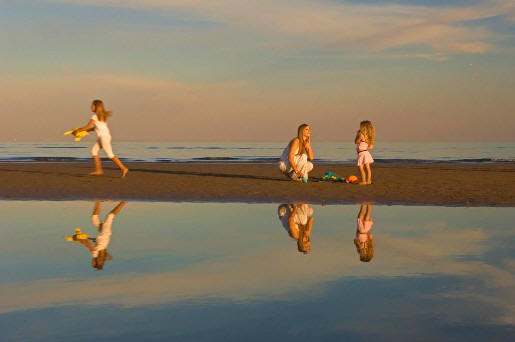
Unadulterated nature
Great forests and boundless natural parks in which to observe wild chamois and deer. Gentle hills are ideal for trekking and mountain biking. The silence that accompanies a birdwatching trip in the lagoon. A territory that is in parts still completely wild; one to be enjoyed with all the senses. Mother Nature abounds and is easily accessible in Friuli Venezia Giulia. And contact with the natural surroundings in this part of the world is always a source of joy and wonder. In Carnia, in the Tarvisiano region, and in the Friuli Dolomites, the locals’ love for their land has resulted in the preservation of extensive forests and natural parks.
It is common here to come across chamois, deer, and ibex roaming in the wild; and if you’re lucky, you might even surprise a bear wandering in its natural habitat. Can you imagine the silence of the Marano and Grado lagoons with their characteristic straw-roofed fishermen’s huts (called casoni), the majestic flight of the heron and the thousands of other bird species found in the wildlife oases? And if you enjoy walking or cycling, why not visit the rolling hills of the Collio area with its vast vineyards, mountains, and enchanted valleys and the many wild animals that can be seen on treks, in a continuous succession of exciting views?
Another obligatory excursion is a visit to the Miramare marine nature reserve, the oldest in Italy. Everything is possible in Friuli Venezia Giulia. Unspoiled nature with areas of true wilderness crossed by clear rivers and mountain torrents, the calm sea, delicious local cuisine and wines, and a hospitable local population to make sure your holiday experience is truly varied and absolutely memorable. Friuli Venezia Giulia isn’t just another Italian region, it’s a veritable treasure trove to be experienced with all your senses.
Unmissable things to do in Friuli – Part 2
The Via delle Malghe Trail
A network of paths that join Carnia and Carinthia, connecting valley settlements with mountain dairies (called malghe) and border passes where Italian and Austrian merchants, shepherds, herdsmen, and smugglers used to roam in times long past. Today the trails are open to all, walkers of all levels of ability, mountain bikers, and horse trekkers. The paths provide the ideal point of access to a world of unique natural and historic attractions, where visitors can also enjoy the superb flavor of delicious freshly made Alpine cheeses.
A village called Carnia
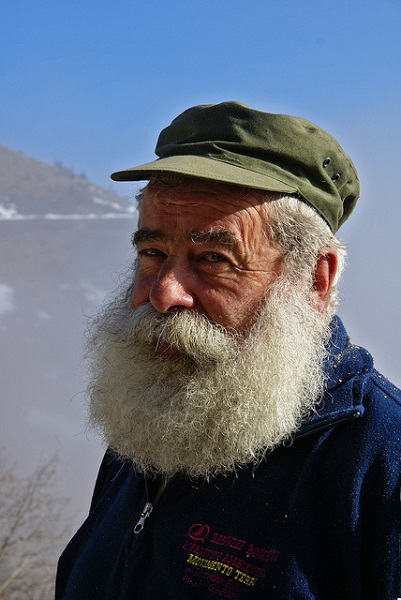
Ph. flickr/Elido Turco
It’s called anonymous or ‘minor’ architecture, but it represents the fascinating mark of a distant and almost forgotten culture. Dwellings that enchant with their simplicity, conditioned by the elementary needs of life and work, the final remains of a peasant culture that has long disappeared in Italy and which is a thrill to rediscover. Wandering through the villages of Carnia, you will learn to recognize the typical arcades, arches, rusticated ashlar facades, and wooden balconies. All features bear witness to the oldest and best-preserved architecture of the Alps.
Unmissable in Friuli – Part 3
The Sbilfs
Which, in the Friuli tongue, means imps or elves, the people of the woods. Hearsay has it that they are mischievous and secretive. But those with a pure heart, who still allow themselves to be enthralled by the blue waters of a lake or the deep green of a forest can have the luck to see them. Try hiking in the tranquil atmosphere of the vast forests of Friuli Venezia Giulia. You may just be privileged enough to meet them!
Snow: living the dream
Hundreds of kilometers of ski slopes at Tarvisio, Ravascletto, Forni di Sopra, Piancavallo, and Sella Nevea. With no queuing for lifts. Downhill, cross-country, snowboard, skating, and ice climbing, for maximum thrills in touch with nature. Skiing without having to negotiate long queues at the ski lifts, enjoying peaceful runs down safe slopes, in the tranquillity of an unspoiled mountain landscape: the ski slopes of Friuli Venezia Giulia are the perfect destination.
Tarvisio, Ravascletto, and Forni di Sopra are tiny villages that almost resemble nativity scenes, wherein the evening the inhabitants gather around the traditional fogol̢r Рa fireplace with a cheering blaze and a warm and hospitable atmosphere. Piancavallo and Sella Nevea are irresistible with their stylish modern ski resort flair to allow visitors to experience the sport full circle.
If you’re looking for real mountains where you can engage in a range of winter sports and enjoy a combination of partying and time-honored tradition, why not try the other snow: the mountains of Friuli Venezia Giulia. Mountains where skiers can practice their sport in complete harmony with their natural surroundings: from cross-country skiing to snowboarding, skating to ice climbing.
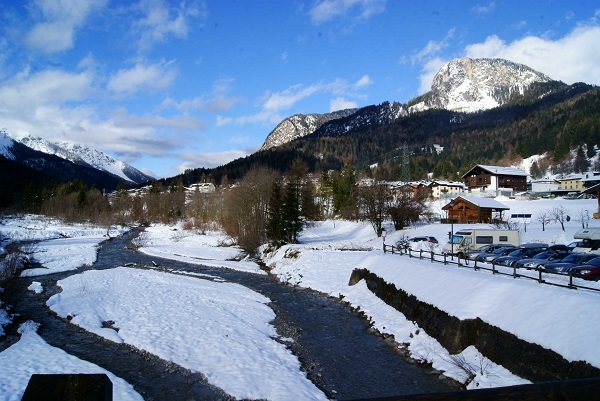
Ph. depositphotos/coradazzir
Where you can achieve any dream and enjoy fantastic adventures in the snow: ride on a dog sled or even take charge of it, go for a trek with snowshoes, or spend a night in an igloo. An Alpine paradise dotted with small ski resorts and crisscrossed by countless miles of pistes through the wooded slopes.
At Piancavallo, on the clearest winter days, skiers are rewarded with a distant view of the sea as they wind down the pristine slopes. At Sella Nevea the pistes are open until springtime; Ravascletto-Zoncolan offers one of the best equipped and most modern ski resorts; Forni di Sopra is a sparkling diamond set in the peaks of the Fruili Dolomites; the Tarvisiano, immersed in a unique setting of unspoiled natural beauty, is a paradise for downhill and cross-country skiers.
A ‘scattered’ hotel
Friuli Venezia Giulia provided the first examples in Italy. This form of accommodation combines the formulae typical of a hotel, pension, and holiday apartment in one location. Visitors are accommodated in historic houses dotted around tiny villages such as Comeglians, Lauco, Monte Prat di Forgaria, Sutrio, or Sauris.
Perfectly renovated houses fully equipped and furnished tastefully in accordance with traditional mountain styles, equipped with all the amenities of a hotel (such as a single reception desk) but brimming with atmosphere and steeped in the life of the village, with its cadences and traditions.
Unmissable things to do in Friuli – Part 4
Val di Resia
An isolated valley inhabited by a population of ancient Slav lineage, preserving the language, customs, musical instruments, and musical forms of a tradition dating back to the 7th century. These are the people of Val di Resia, custodians of ancient lore and tradition combining history and legend. One of the many features that make Friuli Venezia Giulia and its people absolutely unique in Italy.
Well-being for body and soul
A regenerative holiday in a spa. From the traditions of Grado, frequented in the past by the Austro-Hungarians, to the modernity of Lignano and Arta Terme, which boasts a fully-equipped wellness farm. Plus a series of hotels with beauty farms dotted throughout the region. It is completely natural that this open and hospitable land should know how to look after our bodies and wellbeing. On the coast or in the mountains, the spa springs can form the hub for your holiday, with wellness and beauty treatment, herbal teas, and natural cosmetics based on traditional herbal practice.
The Terme di Grado was already famous at the time of the Austro-Hungarian empire: saltwater bathing pools, spa waters, and sand bathing are all aspects of a wide-ranging and inviting offering of health treatments. The Lignano spa resort is of more recent construction and boasts more modern facilities.
At Arta Terme in Carnia, the benefits of the spa water are combined with a remarkably healthy climate. Here a super-modern wellness farm provides all that’s needed for the regeneration of body and soul. So indulge yourself with a holiday in Friuli Venezia Giulia: the region offers a wide choice of relaxing hotels with superbly equipped beauty farms.
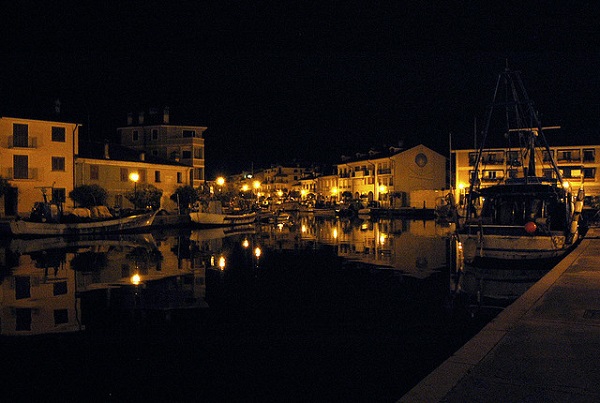
Ph. flickr/Emiliano
Unmissable in Friuli – Part 5
Phytotherapy
Carnia, one of the most unspoiled areas of the entire Alpine chain, is a vast natural botanical garden located in north-western Friuli, boasting plentiful plants and herbs that are widely and skilfully used in accordance with ancient recipes in herbal medicines and in the wholesome and delicious traditional cuisine.
Artistic cities: far from ordinary
Trieste and its Habsburg charm, Udine and its Venetian architecture, Pordenone with its 16th-century buildings, Gorizia and its Central European elegance. A kaleidoscope of history and culture in a land that for centuries has been inhabited by many peoples. What is about the magical nature of the cities of Friuli Venezia Giulia with their rather reserved and elegant atmosphere that makes them so different from other Italian cities?
No doubt the secret lies in their history: they have undergone settlement by the Celts, Romans, Longobards, and the dominion of the Republic of Venice and of the Habsburg dynasty. When wandering through the streets of Trieste, drop into the Borgo Teresiano with its severe forms that are so reminiscent of Vienna, pause to breathe in the Central European atmosphere of its cafes, stroll through the streets that were once the haunts of James Joyce and Italo Svevo.
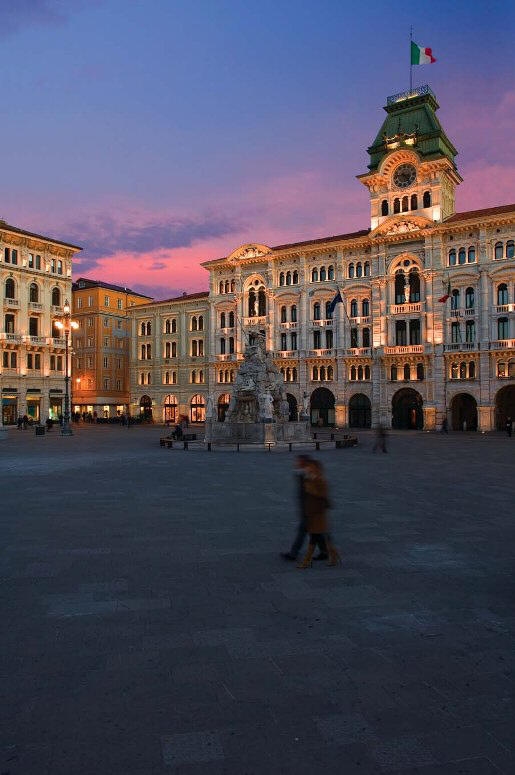
Trieste is a city of European art and culture. Alternatively, why not explore the exquisitely Venetian allure of Udine, with its enchanting piazzas, the Loggia del Lionello, and the Torre dell Orologio? Succumb to the magic of the frescoes of Gianbattista Tiepolo in the Palazzo Arcivescovile and admire the rooftops of Udine from the observation point of Udine castle, allowing your gaze to take in the length and breadth of Friuli right up to its mountain ranges.
Take a trip to Pordenone with its 16th-century palazzi, its Romanesque churches, the Gothic and baroque buildings, the historic center with its long series of porticoes and frescoed facades. Gorizia, a refined Central European city on the border with Slovenia, is a meeting point between different cultures, as is immediately evident in its streets, its architecture, and its monuments. Here you will be completely immersed in a unique environment formed of different art and unfamiliar atmospheres and flavors.
The Opicina tram
A page of the history books must be reserved for the Opicina tram, which since 1902 has linked Trieste with Villa Opicina, the elegant city, and its wild, harsh hinterland. The distance is no more than three miles, but the ride is like an exciting voyage of discovery, especially when the gradient reaches 26% and the tram is transformed into a cable car. Traveling on the Opicina tram provides an authentic scene from the Austro-Hungarian era of Trieste.
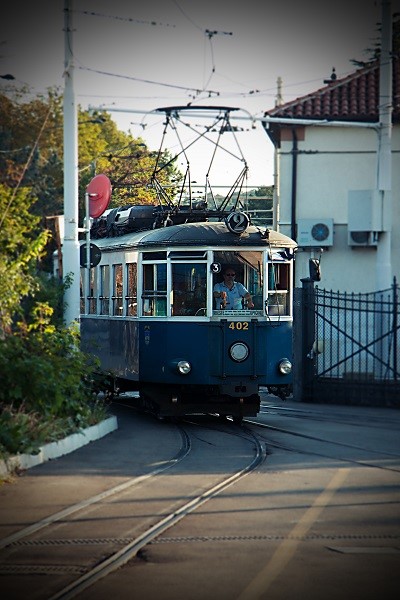
Ph. depositphotos/barduz80
Unmissable in Friuli – Part 6
Exploring castles and country houses
Fortresses, castles, and villas are testimonials to an eventful past. Traveling through Friuli Venezia Giulia in search of country houses and palazzi will provide you with a new vision of the region. Venzone, Osoppo, Cordovado, Spilimbergo, Colloredo, Villalta, Strassoldo, Zoppola and Porcia are just some of the imposing fortifications dotted throughout the region, from the mountains to the coast.
Imposing is the only adjective that aptly describes the fortress town of Palmanova, with its steep walls and layout in the form of a nine-pointed star. Likewise, the word spectacular comes to mind when observing the castles of the Carso, perched on sheer mountainsides or on steep sea cliffs, such as the castle of Duino. A visit to the Castle of Miramare, a pure pearl of rare beauty dominating the Gulf of Trieste is another must. Perfectly preserved with its original furniture and decorations, it was commissioned by Charlotte of Belgium and her husband Maximilian of Habsburg, Emperor of Mexico.

Ph. depositphotos/emmeci74
Living history, hidden treasures, and unique villages Roman and Longobard remain echoes of the Habsburg dynasty, trenches from the Great War, and traces of the Cold War: taking a dive into the past becomes natural.
Friuli Venezia Giulia is an important part of the history of Italy and of Europe. Living in these historic sites is a singular and thrilling experience. Roman and Longobard ruins, echoes of the Habsburg dynasty, trenches from the Great War, and traces of the Cold War lie all over this region, which is like an open history book.
As a result, plunging into the past comes quite naturally. Strolling among the ruins of Aquileia or walking over its polychrome mosaics will take you back to Roman times. And re-enactments in period uniform will take you into the midst of the First-World-War battle on sites that have helped forge recent European history: you will follow the tunnels and trenches and eat the soldiers’ rations, prepared as they were almost a century ago.
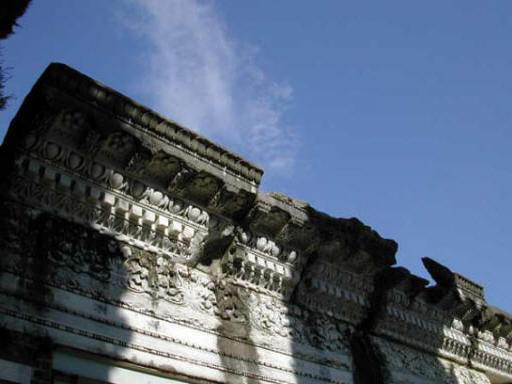
The intensity of the emotions will contrast with the beauty and peacefulness of the nature that surrounds you now. Friuli Venezia Giulia also provides the perfect scenario for rediscovering our more recent history: it was through this border country that the Iron Curtain used to run. It is in these hills that some pages of modern history have been written; the official one and the one not to be found in any books. In the Carso, in the foothills of the mountains, and in Carnia, you can still find the paths taken by smugglers and spies, paths used in the not-so-distant past by many fugitives in search of liberty. Even today, to careful eyes, Gorizia reveals its history as a city divided by the last wall in Europe, brought down only in 2004.
Aquileia for the Romans, Cividale for the Longobards. An inestimable historic heritage. Venzone, enclosed within its medieval walls, Gemona and its 15th-century cathedral, Spilimbergo, home to the most important mosaic school in the world. And the history does not end here.
Friuli Venezia Giulia is also a land of small historic towns, rich in monuments and works of art. Cividale boasts a unique historic heritage, with streets bearing witness to its Longobard past, a 15th-century cathedral, and the Longobard Tempietto, an absolute masterpiece of Longobard art and architecture.
Aquileia, declared a World Heritage Site by Unesco, is one of Italy’s prime archaeological locations. Founded as a Roman colony, it rose to become the fourth-largest city in the empire and possesses admirable artistic treasures, some dating from the later period of the patriarchs, such as the mosaic pavement in the Basilica, the largest in Europe. Gemona, instead, boasts a magnificent 15th-century cathedral, entirely rebuilt as it was in the wake of the terrible earthquake in 1976.
Venzone, also protected by Unesco, is a rare example of a fortified town enclosed within medieval walls. Clauiano, a village near Trivignano Udinese, has been included in the list of historic hamlets of Italy. Nor must one miss the garden of the Serenissima, Sacile, with its watercourses and canals, and the enchanting medieval village of San Vito al Tagliamento. Then there is Spilimbergo, celebrated for the frescoed façade of its castle and for its mosaic school, the most important in the world.
Continue to Part II of this article on Sights in Friuli.
Agenzia Turismo Friuli Venezia Giulia

